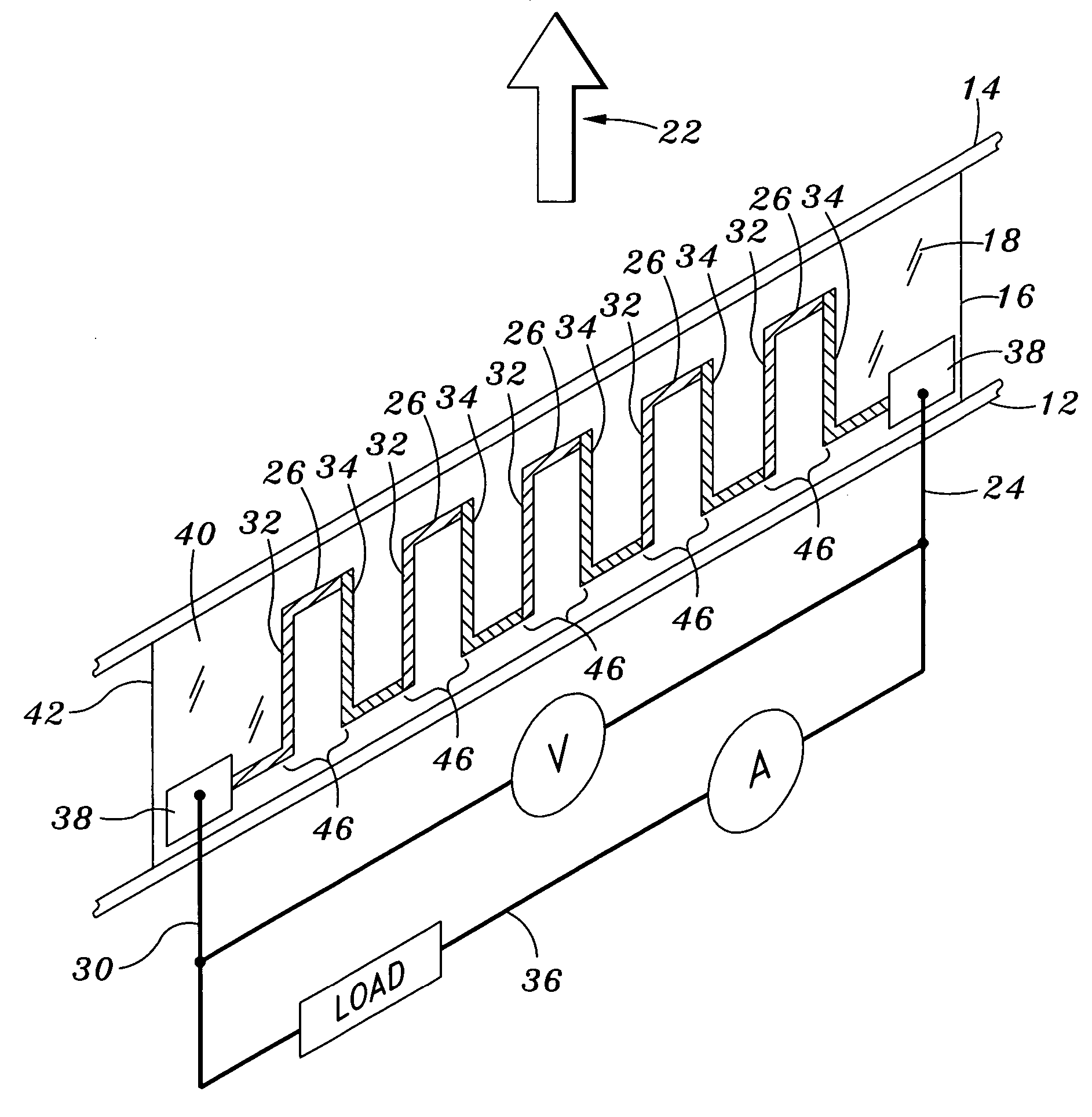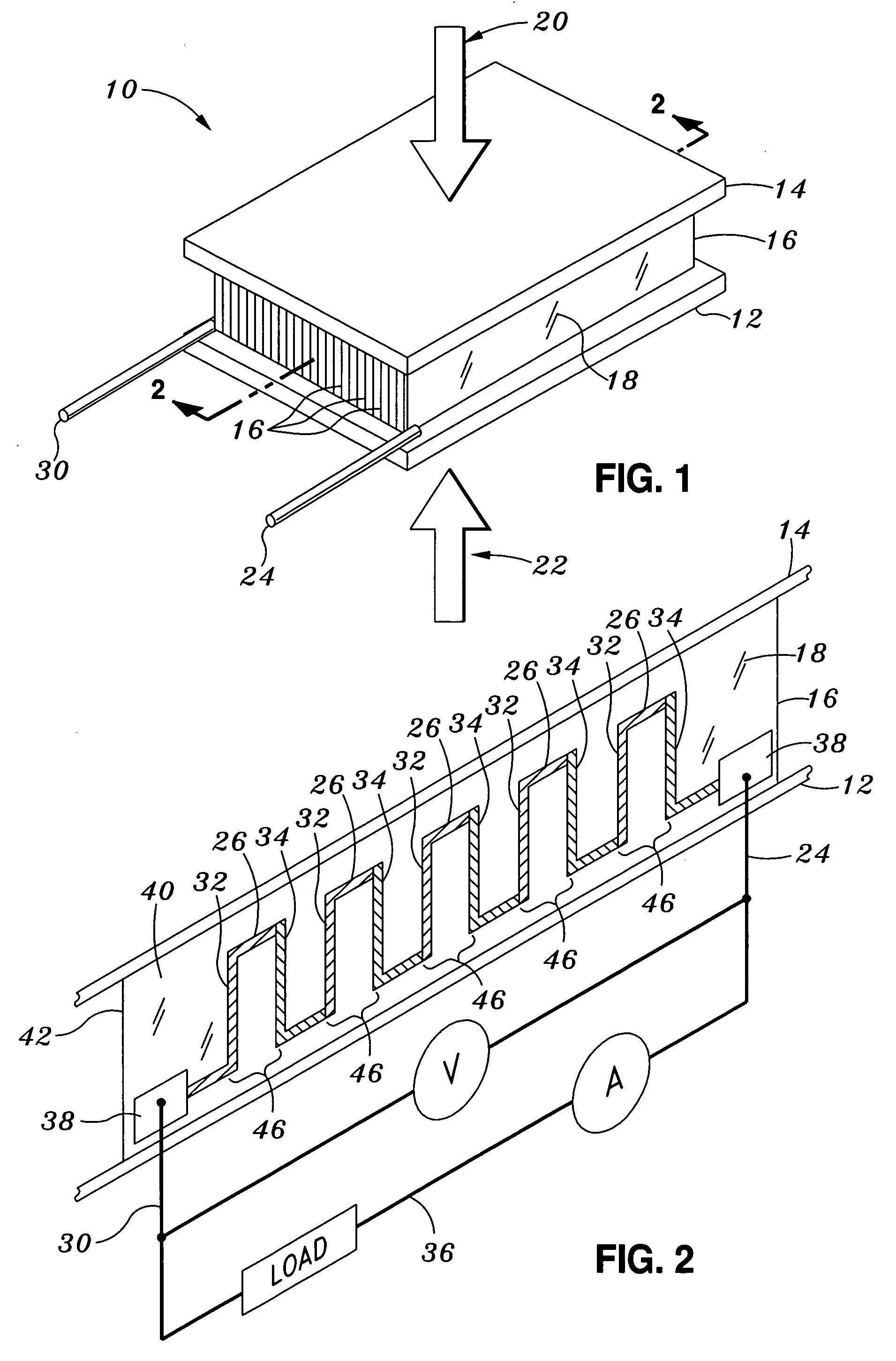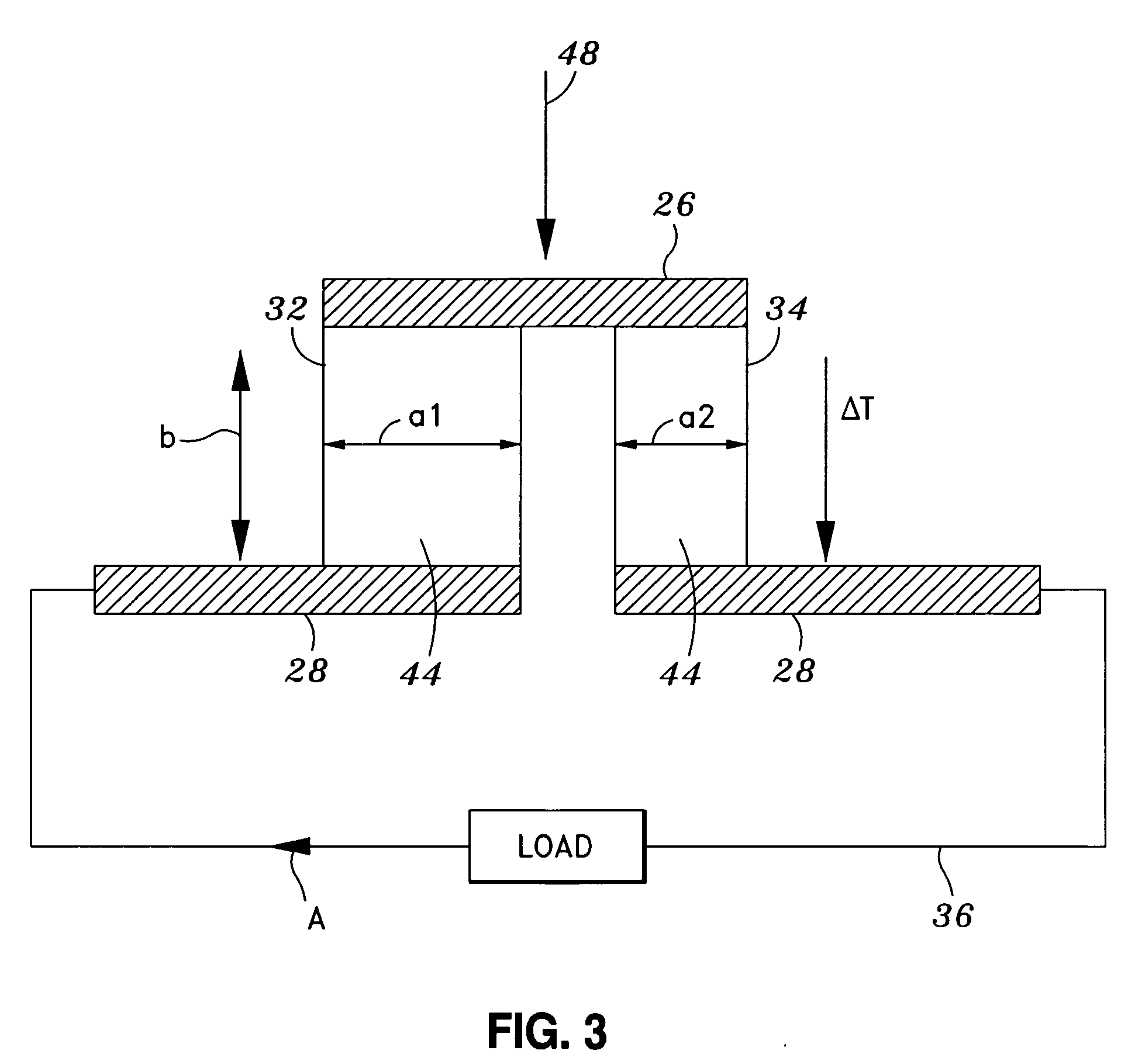Low power thermoelectric generator
- Summary
- Abstract
- Description
- Claims
- Application Information
AI Technical Summary
Benefits of technology
Problems solved by technology
Method used
Image
Examples
Embodiment Construction
[0043] Referring now to the drawings wherein the showings are for purposes of illustrating preferred embodiments and not for purposes of limiting the same, FIG. 1 is a perspective view of an embodiment of a thermoelectric generator 10 having a generally square-shaped and being comprised of a rectangular array of foil segments 16 in a vertically stacked arrangement.
[0044] The embodiment shown in FIG. 1 is the subject of U.S. patent application Ser. No. 11 / 185,312 entitled LOW POWER THERMOELECTRIC GENERATOR and filed on Jul. 20, 2005, and U.S. Pat. No. 6,958,443 filed on May 19, 2003 and entitled LOW POWER THERMOELECTRIC GENERATOR, the entire contents of each being expressly incorporated by reference herein in their entirety and each having the same assignee as the present application. FIG. 2 is a cross-sectional side view of the thermoelectric generator shown in FIG. 1 illustrating the arrangement of alternating n-type and p-type thermoelectric legs that are disposed on a substrate ...
PUM
 Login to View More
Login to View More Abstract
Description
Claims
Application Information
 Login to View More
Login to View More - R&D
- Intellectual Property
- Life Sciences
- Materials
- Tech Scout
- Unparalleled Data Quality
- Higher Quality Content
- 60% Fewer Hallucinations
Browse by: Latest US Patents, China's latest patents, Technical Efficacy Thesaurus, Application Domain, Technology Topic, Popular Technical Reports.
© 2025 PatSnap. All rights reserved.Legal|Privacy policy|Modern Slavery Act Transparency Statement|Sitemap|About US| Contact US: help@patsnap.com



